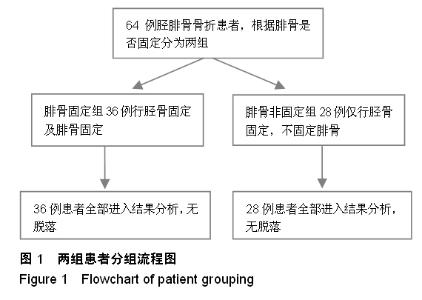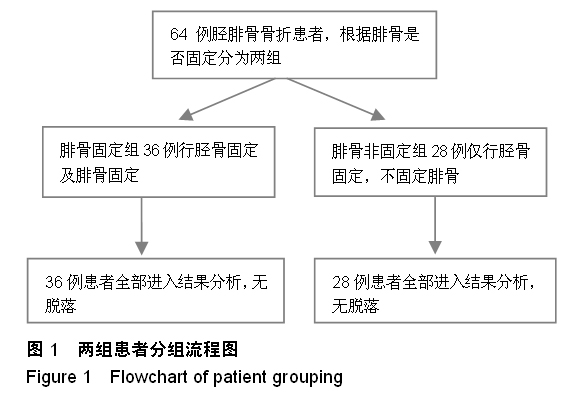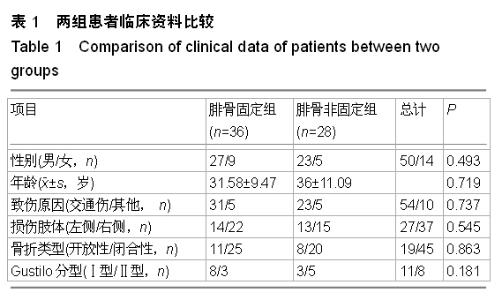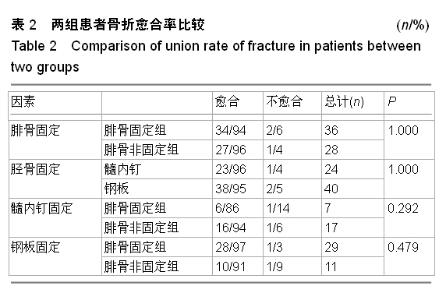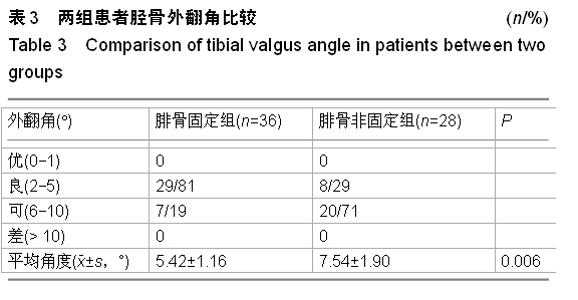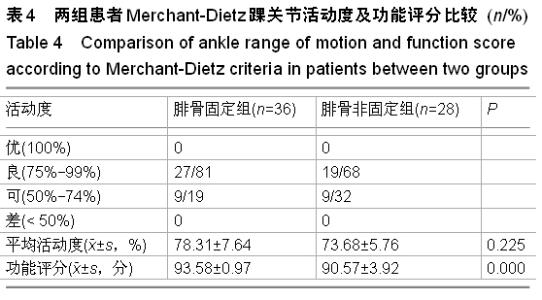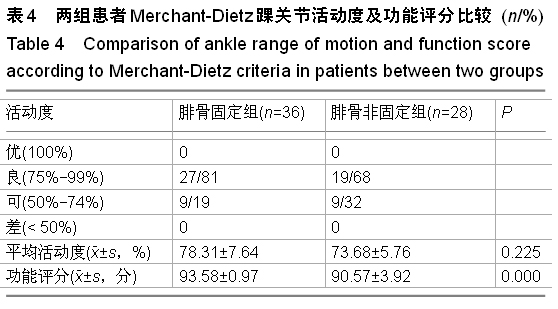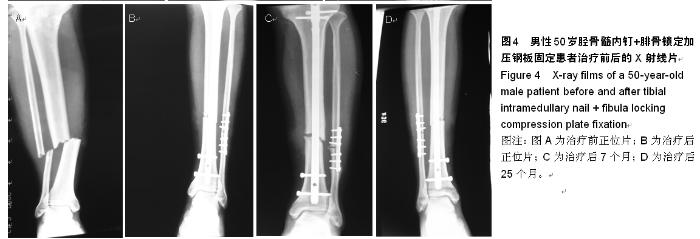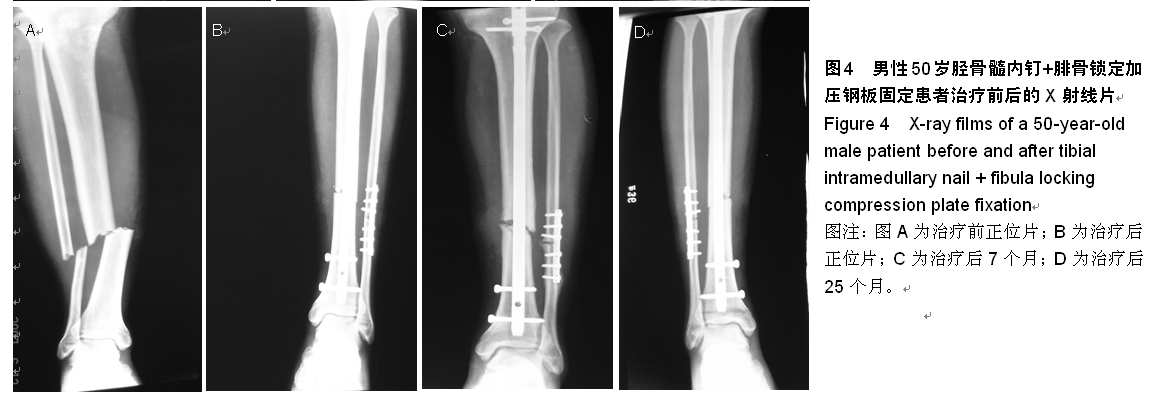| [1] Chapman MW. Fractures of the tibial and fibular shafts. In: Chapman MW, editor. 3rd ed, Chapman’s orthopaedic surgery, vol. 1, 3rd ed. Philadelphia: Lippincott Williams and Wilkins; 2001:755-810.
[2] Moreau PG. Book review: Rockwood and Green's fractures in adults. Ann Saudi Med. 1994;14(1):75.
[3] Kimmel LA, Edwards ER, Liew SM, et al. Rest easy? Is bed rest really necessary after surgical repair of an ankle fracture? Injury. 2012;43(June 6):766-771.
[4] Naqvi GA, Shafqat A, Awan N. Tightrope fixation of ankle syndesmosis injuries: clinical outcome, complications and technique modification. Injury. 2012;43(6):838-842.
[5] Whorton AM, Henley MB. The role of fixation of the fibula in open fractures of the tibial shaft with fractures of the ipsilateral fibula: indications and outcomes. Orthpaedics. 1998;21: 1101-1105.
[6] Varsalona R, Liu GT. Distal tibial metaphyseal fractures: the role of fibular fixation. Strat Traum Limb Recon. 2006;1:42-50.
[7] Weber TG, Harrington RM, Henley MB, et al. The role of fibular fixation in combined fractures of the tibia and fibula: a biomechanical investigation. J Orthop Trauma. 1997;11: 206-211.
[8] Goh JC, Mech AM, Lee EH, et al. Biomechanical study on the load-bearing characteristics of the fibula and the effects of fibular resection. Clin Orthop Relat Res. 1992;(279): 223-228.
[9] Lee EH, Goh JC, Helm R, et al. Donor site morbidity following resection of the fibula. J Bone Joint Surg Br. 1990;72(1): 129-131.
[10] Konig M, Gotzen L. Pseudarthroses of the fibula following fractures of the lower leg. Unfallchirurg. 1989;92(4):191-194.
[11] Gotzen L,Haas N, Hutter J, et al. The importance of the fibula for stability in plate osteosynthesis of the tibia (author’s transl). Unfallheilkunde. 1978;81(5):409-416.
[12] Strauss EJ, Alfonso D, Kummer FJ, et al. The effect of concurrent fibular fracture on the fixation of distal tibia fractures: a laboratory comparison of intramedullary nails with locked plates. J Orthop Trauma. 2007;21:172-177.
[13] Bonnevialle P, Lafosse JM, Pidhorz L, et al. Distal leg fractures: how critical is the fibular fractures and its fixation? Orthop- Traumatol Surg Res. 2010;96:667-673.
[14] Morin PM, Reindl R, Harvey EJ, et al. Fibular fixation as an adjuvant to tibial intramedullary nailing in the treatment of combined distal third tibia and fibula fractures: a biomechanical investigation. Can J Surg. 2008;51(1):45-50.
[15] Egol KA, Weisz R, Hiebert R, et al. Does fibular plating improve alignment after intramedullary nailing of distal metaphyseal tibia fractures? J Orthop Trauma. 2006;20: 94-103.
[16] Richmond J, Colleran K, Borens O, et al. Nonunions of the distal tibia treated by reamed intramedullary nailing. J Orthop Trauma. 2004;18(9): 603-610.
[17] 陈孝平,邱贵兴.外科学[M].11版.北京:人民卫生出版社,2010: 8.
[18] Merchant TC, Dietz FR. Long-term follow-up after fractures of the tibial and fibular shafts. J Bone Joint Surgery Am. 1989;71(4):599-606.
[19] 卢世璧,王岩.坎贝尔骨科手术学[M].11版.北京:人民军医出版社, 2009:2446.
[20] 王敏,李思明.带锁髓内钉与加压钢板治疗胫骨干骨折120例临床疗效对比分析[J].广州医药,2012,43(5):12-15.
[21] Yavuz U, Sökücü S.Comparison of intramedullary nail and plate fixation in distal tibia diaphyseal fractures close to the mortise. Ulus Travma Acil Cerrahi Derg. 2014;20(3): 189-193.
[22] 吴超,谭伦.闭合复位经皮锁定钢板与交锁髓内钉治疗胫骨干中下段骨折的疗效比较[J].中国矫形外科杂志,2010,18(8): 633-637.
[23] 亢世杰. 胫骨远端髓内钉与锁定接骨板治疗胫腓骨远端骨折的临床对比[D].青岛大学,2014.
[24] 陈军.成人胫骨干骨折手术治疗[J].临床医学, 2012,32(11): 5-7.
[25] Uzun M, Kara A. Hindfoot Valgus following Interlocking Nail Treatment for Tibial Diaphysis Fractures: Can the Fibula Be Neglected? Adv Orthop.2014;2014:806363.
[26] 甄景华,苏履中.外固定支架结合腓骨内固定治疗复杂性胫腓骨骨折[J].华北煤炭医学院学报,2006,8(1):77-78.
[27] Horn J, Steen H, Reikeras O. Role of the fibula in lower leg fractures: an in vivo investigation in rats. J Orthop Res. 2008;26(7):1027-1031.
[28] 林华波.交锁髓内钉结合钢板内固定促进胫腓骨中下1/3段骨折愈合的效果观察[J].中国现代药物应用,2015,9(2):69-70.
[29] Ma H,Wang C.Double plating for the treatment of distal tibia and fibula fractures: caseseries of twenty five patients. Eur Rev Med Pharmacol Sci. 2013;17(16):2250-2253.
[30] Dombroski D, Scolaro JA. Fibular fracture stabilization with a guidewire as supplementary fixation in tibia fractures.Am J Orthop. 2012;41(11):506-509.
[31] Prasad M, Yadav S.Assessment of the role of fibular fixation in distal-thirdtibia-fibula,fractures and its significance in decreasing malrotation and malalignment. Injury. 2013;44(12):1885-1891.
[32] Yavuz U, Sökücü S.Comparison of intramedullary nail and plate fixation in distal tibia diaphyseal fractures close to the mortise.Ulus Travma Acil Cerrahi Derg. 2014;20(3):189- 193.
[33] Li Y, Jiang X, Guo Q, et al.Treatment of distal tibial shaft fractures by three different surgical methods: a randomized, prospective study.Int Orthop. 2014;38(6):1261-1267.
[34] Berlusconi M, Busnelli L, Chiodini F, et al.To fix or not to fix? The role of fibular fixation in distal shaft fractures of the leg. Injury. 2014;45(2):408-411.
[35] Stewart CM, Kiner D, Nowotarski P. Intramedullary nail fixation of fibular fractures associated with tibial shaft and pilon fractures.J Orthop Trauma. 2013;27(5):e114-117.
[36] Vallier HA, Cureton BA, Patterson BM.Randomized, prospective comparison of plate versus intramedullary nail fixation for distal tibia shaft fractures.J Orthop Trauma. 2011;25(12):736-741.
[37] Williams TM, Marsh JL, Nepola JV, et al. External fixation of tibial plafond fractures: is routine plating of the fibula necessary. J Orthop Trauma. 1998;12(1):16-20. |
